Rise and Fall (Haller's Legacy)
Not only the Hotel La Maison du Directeur, but also the entire hamlet Les Dévens is a place with an extraordinary history.
The expression “L’académie sans fauteuils et sans palmes”, today a metaphor for this famous spot near Bex, was introduced by Jean-Balthasar Schnetzler (1823–1896) in his opening speech at the occasion of the 60th annual meeting of the Swiss Society of Natural Sciences (1877) in Bex VD. The assembly took place in memory of the historic representatives who had shaped this place and whose scientific findings had radiated from here into the entire world. A 'Re-Narration' of this event recently took place in this hotel.
The foundation of this Academy was laid by the polymath from Bern, Albrecht von Haller (1708–1777), who officiated as director (1758 –1764) of the Salines in the Waadt. The worries about the forest and the concomitant supply of wood for salines, that is the firing of the brewing coppers, building the sole flues and support structures, led to the idea to map the forest stand, whereby Haller recruited foresters for this job. Since the savant Haller was predominantly interested in the then still poorly known flora of the Alps, he trained those for his needs.
Very docile and talented ‘students’ were Pierre Thomas (1708-1781) and his son Abraham Thomas (1740-1824) as Haller noted in one of his flora oeuvres. Today, one would name them ‘Children of Nature’. The Thomas’ got the pole of attraction for environmentalists, who, in their company, explored the Alpine world, collected, described and illustrated plants, and last but not least were inspired in literature work by this unique constellation.
Eugène Rambert (1830–1886), a famous Swiss author and professor at the Academy of Lausanne and the Federal Institute of Technology in Zurich, characterized the situational cue as follows:
“At the time of Haller as well at that of Charpentier, the singularity of this small scientific spot relied on the encounter of reputed science – cocksure of itself, of its principles and methods – with an ingenuous science driven by burning curiosity and astute power of observation, talents, which imply an inexplicable and unrivaled bond with nature.”
A short overview of the family THOMAS is presented in a HLS article (translated by twb) by Jean-Louis Moret as shown below.
Les THOMAS
"Family of Vaud obtaining the citizenship of Bex in 1458. As of the 18th century, the Thomas gained a reputation as foresters, botanists and retailers of plants, first in Fenalet and thereafter at Les Dévens (both in the municipality of Bex).
Pierre (1708-81), forester of the salines of Bex, collaborated with Albrecht von Haller, once the latter became director of the salines.
Abraham (1740-1824), son of Pierre, collected as of 1764 plants for Haller in the Alps of Vaud and Valais as well as in Northern Italy and Eastern Switzerland. He established a trading in seeds and fresh as well as dried plants, which he collected in the countryside or in his gardens at Les Dévens, Les Posses, and Le Fratchi.
His son Emmanuel (1788-1859), who also made several collecting trips, carried on the business and enlarged it. He published four catalogues on 'Swiss' plants, with two supplements. The base of his two catalogues on Sardinian plants were specimens regularly sent from Sardinia by his brother Pierre-Philippe-Louis (1782-1831), physician in Cagliari.
The trading was undertaken by Jean-Louis (1824-86), then carried on by his offsprings and stopped in 1900.
Die THOMAS supplied the most significant scientific collections in Europe with plants. Abraham and Emmanuel maintained collaborative relations with Jean de Charpentier, director of the Salines of Bex, Laurent Joseph Murith, author of a plant guide of the Valais, and Jean Gaudin,providing them with informations and specimens.
In 1891, the alpine garden Thomasia was planted in Pont de Nant above Les Plans-sur-Bexin honour of the THOMAS. It is under the supervision of the museums and botanical gardens of the County of Vaud."
LES MAISONS (THE HOUSES)
To be more close to the clients, Abraham moves from Fenalet to Les Dévens, a hamlet of Bex.
La Maison Rouge (The Red House)
Even though a stony sculpture, dated 1826, of the THOMAS' family crest decorates the entrance, the building is without doubt a quarter century older. It must have been built shortly after about 1800 and served Jean de Charpentier as humble and narrow accomodations («excessivement incommode et resserré»; Bissegger 1993). In 1824, the Geneva philanthropist (Jean) George Mallet (1787- 1865) writes in his travel report Le Tour du lac de Genève, pp 125-126, the following about this hamlet: "„ (...); within the group there is one house with the first upstair occupied by Mister Charpentier, inspector of the mines, distinguished geologist, the ground floor by the naturalist Mister Thomas who establishes collection of plants, mussels, and minerals for selling and shipping. The whole lot signifies the commitment to natural sciences; a small garden not only contains flowers of the Alps, but also exotic plants; a granite block supports a bee yard; in the house one sees various collections, several books. Mister Thomas was not at home when he entered his place, he was on one of his extended mountain trips which filled his summertime, and from which he returned with abundant harvests".
["„ (...); dans ce groupe est une maison dont le premier étage est habité par Mr. Charpentier, inspecteur des mines, géologue distingué, le plain-pied par Mr. Thomas naturaliste, qui forme des collections de plantes, de coquilles et de minéraux dont il fait des ventes et des envois. Tout, autour de cette demeure indique qu’on y cultive les sciences naturelles; un petit jardin contient non-seulement les fleurs des Alpes, mais encore des végétaux exotiques ; des blocs de granit soutiennent un rucher ; dans la maison on voit des collections de différens genres, quelques livres. Mr. Thomas était absent lorsque nous entrâmes chez lui, il faisait dans les montagnes une de ces grandes courses qui remplissent pour lui la belle saison, et dont il revient avec d’abondantes récoltes.“.]
The building made of brick looks similar to a chalet with one level above the ground floor and with a low-pitched gable roof, originally slated.
Das Gebäude, aus Backsteinen gemauert, sieht ein wenig wie ein Chalet aus mit einem Stockwerk über dem Erdgeschoss und einem Satteldach mit geringer Neigung, ursprünglich mit Schiefer bedeckt.
La Maison Grise (The Gray House)
In 1825, Emmanuel THOMAS constructed this house, which later will be inhabited by his son Jean-Louis with family. Charpentier planned the house and together they were the architects. THOMAS knew the resources of the construction material such as wood, tiles etc., and under his direct supervision, the workmen erected a large building with plenty of space for collections and business (s. Lebert).
The Académie and its Visitors
We have to distinguish between two epoques of the Académie, namely (a) before the time and (b) at the time Charpentier's.
(a) The Académie before Charpentier's time
Then, primarily natural scientists interested in Botany and Minerals came to this region, to be guided by the two THOMAS (Pierre und Abraham) on alpine, floristic excursions.
One of the first botanical explorers who arrived in the region, was the 25-year-old, storminess Scot Thomas Blaikie (1751-1838), who later was to advance to a renowned landscape gardener in France. From his dairy entries we learn that he undertook on the one hand tremendous excursions with Abraham THOMAS. On the other hand he was on the move with the elderly, but pretty fit Pierrre THOMAS (he put Pierre's age at 80!) In May 1775, Blaike entered Switzerland in Geneva, where he ran across the 22-year-old Henri-Albert Gosse (1753-1816), the later initiator and co-founder (1815) of the 'Schweizerische Naturforschenden Gesellschaft' (today Swiss Academy of Natural Sciences (SCNAT). Gosse introduced Blaikie to the then still young 'Natural Philosopher and Mountaineer', Horace Bénédict de Saussure (1740-1799).
Due to Laurent Joseph Murith (1742–1816), Prior of the Hospice of the Grossen Sankk Bernhard, we possess a unique historical document. He was a polymath and did together with the THOMAS' intense research on the Valaisan Flora. We may recommend his booklet Le Guide du Botaniste qui Voyage dans le Valais (1810), which mirrors the exchange of letters between Abraham THOMAS and the Prior about their botanical discoveries. According to the close friend of the family THOMAS, Alexis Eugène Edmond Mouillefarine (1839–1909), Botanist and eminently respectable Paris lawyer, Murith had invented the correspondence on his own!!...
A highly estimated plant expert was Daniel-Moïsé Favrod (1742-1783), Teacher at Château-d'Oex, who despite his poverty reached international recognition. His lichen specimens are today in the J.E Smith Herbarium of the Linnean Society in London.
Juxtaposed to Favrod is the natural scientist and expert in agronomy, Louis Reynier (1762-1824). He botanized in the Valais together with the THOMAS. After an impressive carrier in foreign governments he returned to his home country. His curriculum is in the HLS.
Last but not least, among the foreign visitors we meet William Jackson Hooker (1758-1865), British botanist and first director of the Royal Botanical Garden in Kew (1841). In 1814, at the very beginning of Charpentier's era he travelled into the region. But he was mostly interested in the plants and he engaged Pierre-Philippe-Louis THOMAS (1782-1831), son of Abraham THOMAS as his guide, later providing him with plants from Sardinia.
Hooker wrote to Henry Fox Talbot (1800-1877) on 25.2.1823: "The Thomas, who accompanied me through a very large portion of Switzerland, is Phillip, and I consider him as an excellent and very honorable fellow, well acquainted with the botany of the whole country.... Thomas intended visiting some islands of the mediterranean."
b) The Académie at the time de Charpentier's
By the election of Jean de Charpentier as the new director of the Salines, Les Dévens developed into a hotspot for geologists from all over the world. Primarily, he dwelt in provisionals. However, the new County of Vaud built for the German geologist a mansion, La Maison du Directeur des Salines. This building is today the Hotel La Maison du Directeur hospitably managed by Jacqueline und Pierre. As regards the construction and architecture of this house we find informative historic details in the already mentioned article by Paul Bissegger : Fantômes de jardins botaniques et demeures de savants aux Dévens, à Bex : les naturalistes Thomas et de Charpentier.
During the next 30 years international experts of science, literature, politics and clergy were continually coming and going; see also Heinz Balmer 1969. The activities were not so much about botany but the history of the glaciers, which is presented in the following:
The phenomenon of the erratics
was 'the stumbling block' provoking the Ice Age Theory, having been advocated within and around this building, and which remained true to this day. The question “How came the huge blocks to the places where they still are?" bothered the science of the 18th and 19th century. Starting point of the discussion was the biblical diluvian – even Haller trusted in it – demanding a scientific explanation by natural laws.
Horace Bénédict de Saussure (1740–1799) furnished his time with the so-called Stossflut-Theorie, explaining the transport of the blocks by an enormous flood. The cause of the floodwaters were (highly compressed) hot gases bursting lakes or melting glaciers. An incurable adherer of this theory was Leopold von Buch (1774–1853), who most likely knew de Charpentier from his student days. Von Buch was several times and together with Louis Agassiz (1807-1873) housed by de Charpentier at Les Dévens. On excursions they explored together the geology. Nevertheless von Buch held tight and tenaciously on his antiquated theory, what in Germany blocked the progress in Ice Age research, because von Buch's reputation was there very high. Nevertheless, Alexander von Humboldt called von Buch who had done outstanding research in many fields of geology, as the "most important geognostic of our time" (Seibold und Seibold 2003).
In the following we draw a simplified picture of the discoveries not without adding a Swiss tinge to it, which may introduce the visitor (and guest of the hotel) into the regional characteristics. A differentiated view of the achievements back then is presented in a comprehensive work by Tobias Krüger. The same author delineates in a chapter the tragic role of de Charpentier in the ice age research, which not least has to do with Louis Agassiz' abnormal ambition. Agassiz was ready to give up his best friendships e.g. by publishing joint discoveries as his own. The disregard of the counterpart's dignity was possibly the cause of his racism he 'cultivated' in the New World.
'Swiss Ice Age Theory'
Its early basis form the observations by the farmer and chamois hunter Jean-Pierre Perraudin (1767-1858) at the Val de Bagnes. None other than François-Alphonse Forel (1841-1912) had them in 1899 summed up by using old sources:
"The observations by a farmer of Lourtier. – Having for a long time observed the scarcely weathering scars and marks (all oriented to the valley) on erratic rocks , and having intensely reflected on this phenomenon, I came while approaching the glaciers to the conclusion that these had been induced by the pressure or the weight of these ice masses and could be found at least till Champsec. This makes me believe that, that the large masse of the glaciers had even filled the entire valley of Bagnes, and I am ready to witness this for the curious by comparing the mentioned tracks to those, which are today laid bare by the glaciers.
The observer Jean-Pierre Perraudin"
Reportedly, the line of perception starts with Jean-Pierre Perraudin (1767-1858) and goes via Ignaz Venetz (1788-1859) to Jean de Charpentier (1786-1855), and finally reaches the young Louis Agassiz (1807-1873). Firstly, they all seriously questioned the explications of Perraudin, but later they all converted into committed advocates of the Ice Age Theory. Louis Agassiz assimilated the thoughts in a masterly manner and helped them to get internationally accepted by publishing the theory without delay under his own name.
The scene or the center of the 'Think Tank' was the saloon of the host Jean de Charpentier, where the opponents discussed until dawn the Pros and Cons round the ingle in the flickering light of the fire and over a few or more glasses of wine.During the day, the marks of the Earth history were visited and examined on-site by excursions. The guests were housed in the nearby Abbey de Salaz, where the monks wondered about the bearing of the scientists, far removed from reality.
Here we pick up the meeting in 1836 during which Agassiz made a change of front – he was until then a supporter of Lyell's theory. Sir Charles Lyell (1797-1875), lawyer and cross changer, was a typical Scotsman, who had descended in his honeymoon upon his geological colleagues in Europe and utilised de Charpentier's hospitality also in 1832!
Besides de Charpentier, Venetz, Agassiz and of course Emmanuel Thomas, the participants in this setting were the later spa physician of the district Bex, Dr. Hermann Lebert (1813-1878), a German descent and in natural sciences highly interested pathologist, who in 1841 got citizenship of Bex and pursued his studies and teaching at the universities of Paris, Zurich, and Breslau (Pickel et al. 2009).
Also a trio from Zurich sat at the table: Albert Mousson (1805-1890), Arnold Escher von der Linth (1807-1872) and Oswald Heer (1809-1883). Mousson was the first professor in physics of the University of Zurich (UZH). He was also an active collector and expert of Swiss and worldwide molluscs what associated him with de Charpentier in a particular manner. Arnold Escher, a life-long friend of Agassiz, was at that time private docent for geology at UZH, whereas Heer was extraordinary professor of botany and entomology.
Present was also Charles Lardy (1780-1858). He had mediated de Charpentier's position in Bex, and was like him a scholar of Abraham Gottlob Werner (1749-1817) at the Bergakademie Freiberg.
Last but not least also Karl Friedrich Schimper (1803-1867) was at the table. He towered all attendees by geniality. His input, like the one by de Charpentier, was to a large part outsmarted by Louis Agassiz.
With the death of this famous glacier researcher in 1855, and of Emmanuel in 1859 – the last important offspring of the Family THOMAS – , the ‘Académie’ passes away.
However, the ‘Académie’ leaves traces: In 1858 the family Pittier with the one-year-old Henri Pittier (1857-1950) moves into the Maison Rouge. The father, Jean-François Pittier (1831-1914), gets employed as carpenter at the Salines. Jean-Louis Thomas lives with his family vis-à-vis; the neighbour's children Marie (1860) and François (1862), though a bit older, are Henri's playfellows . Henri, already very early driven by a thirst for knowledge gets fascinated by the relicts of the THOMAS' collection. Already as a child he establishes his own collection in a secret place. He carries the spirit of the academie over the Atlantic and evolves into a distinguished explorer of the New World Tropics, and is known as the ‘Humboldt of Switzerland’.
Additional Literature
Rudwick MJS (2008) Worlds Before Adam - The Reconstruction of Geohistory in the Age of Reform. The University Chicago Press, Chicago, 614p.
Taylor P (2001) Thomas Blaikie – The 'Capability' Brown of France. Tuckwell Press, East Linton
Cosandey F (1942) Les Naturalistes Thomas et leurs amis. Revue historique vaudoise 50/4, 121-150
Fuchs HP (1988) Histoire de la botanique en Valais: I. 1539–1900. Bull. Murithienne 106, 119-168
Krüger T (2013) Discovering the Ice Ages. International Reception and Consequences for a Historical Understanding of Climate. Translated by Ann M. Hentschel. Brill, Leiden.

L'Abbaye de Salaz
"C'est en 1826 que les naturalistes L. Agassiz et Ignace Venetz, étudiant avec Jean de Charpentier les phenomènes glaciaires passés et presents, habitèrent Salaz où d'autres savants venaient leur
faire visite notamment la pléiade des botanistes Thomas, — dix ans après Agassiz y revenait encore, et le poète F. Oyex (1818- 1884) parle avec jovialité de ces réunions" (F. Isabel, 1930) :
A Salaz, jadis monastère
Vivaient d'aimables moinillons,
Montrant leur savoir-faire
A façonner des « guillons * »
..ô Science, dans tes annales,
Raconte à la 'postérité
Qu'il sortit des voûtes de Salaz
Mainte féconde vérité !...
*Robinets primitifs formés d'une seule cheville ou clé

Translation (by twb):
When to the glacier’s bedrock we go
Above the Town of Monthey,
There the one’s name we see glow
Johann de Charpentier.
Here surrounded by these marvels’ rim
we get his vision power, look up to him,
to the one who grasped first to fix
the sense of block-hieroglyphics
original text:
Gehen wir zu den Gletschergrenzen,
Oberhalb der Stadt Monthey,
Sehen wir den Namen glänzen,
Johann von Charpentier.
Hier umringt von diesen Wundern,
Wir den Seherblick bewundern,
Der zuerst den Sinn begriffen,
Dieser Block-Hieroglyphen.
Oswald Heer ca. 1850-1855: Gedicht auf de Charpentier






Some of the researchers de Charpentier had invited in summer 1836 to his place at Les Dévens, in order to plumb the depths of the Ice Age Theory – during the day by excursions, and in the evening by intense discussions. Also Ignaz Venetz and Louis Agassiz were part of the team.










Die Exekutive lässt sich schliesslich überzeugen und eröffnet, im Juni 1825, einen Wettbewerb für den Erstellung des Hauses. Indessen akzeptiert keiner der Unternehmer, diese Arbeiten im Akkord auszuführen und Pichard (Adrien Pichard (1790-1841), kantonaler ‘Kulturingenieur’ und Kantons-baumeister) insistiert auf einer dringenden Entscheidung vor Einbruch der ‘schlechten’ Jahreszeit. Doch gerade, sagt er, stellen ausgezeichnete Maurer jenes Haus fertig, das Emmanuel Thomas in Les Dévens bauen liess und sind im Begriff zu gehen. Würde es sich nicht lohnen, diese zurückzuhalten?
Die Arbeiten - in geringer Vereinfachung der Pläne - beginnen also sofort. Die Immobilie wird bereits im Oktober 1826 bewohnt. Heute beherbergt sie eine Internatsschule und bedarf einer dringenden Renovation (Bissegger 1993; Übersetzung twb)





A HOTELhiSTORY

![Johann Rudolf Huber [Public domain], via Wikimedia Commons](Albrecht_von_Haller_LARGE.jpg?v=1mu1zg5kh5jipcb)
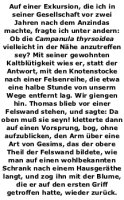

![Campanula thyrsoides, von Thomas Mathis (Eigenes Werk) [GFDL (http://www.gnu.org/copyleft/fdl.html) oder CC-BY-SA-3.0 (http://creativecommons.org/licenses/by-sa/3.0/)], via Wikimedia Commons](Campanula_thyrsoides1.jpg?v=1p0ebwpfj6zm6j)


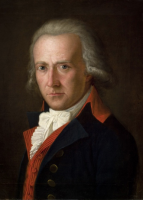
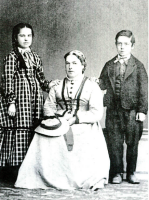
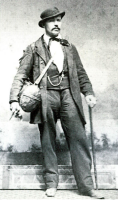
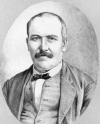

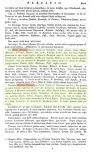



L’académie sans fauteuils et sans palmes:
[The academy without fauteuils and without palms]
‘La Maison du Directeur’ and ‘Les Maisons Rouge et Grise’ at Les Dévens, a hamlet of Bex